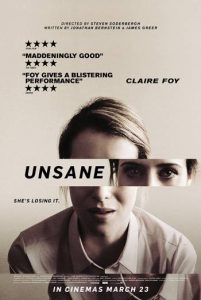By now, cinema aficionados like myself know how to manage their expectations when a noteworthy film director claims they are leaving the industry.
Steven Soderbergh quit filmmaking back in 2014 but returned to directing last year with the heist film Logan Lucky. And now he’s back with the horror movie Unsane. It seems all the guy needs to be pulled out of retirement is a new piece of kit. With Unsane, that piece of kit was the iPhone. The devout indie director likes doing things his way, and when money poses an obstacle to his pure vision, he’s quick to find a solution. I’m a firm believer that limitations liberate and foster creativity.
It’s the innate skill of an artist to turn a limitation into a strength. “I look at this as potentially one of the most liberating experiences that I’ve ever had as a filmmaker,” said Soderbergh. His approach reminds me of a phenomenon I’ve noticed ever since entering the industry over a decade ago: for all the care put into artistry, visual polish often doesn’t matter if you are getting the story right. Don’t get me wrong, the iPhone’s no substitute for the 35mm format; it’s its own thing. But this style of filmmaking comes at a lower cost and capitalises on the lightweight manoeuvrability of the camera. It also frees up room for randomness and unpredictability in the production phase. And unpredictability is fertile ground for creativity.
